Composition
The Rule of Thirds
By Jim Moerschel
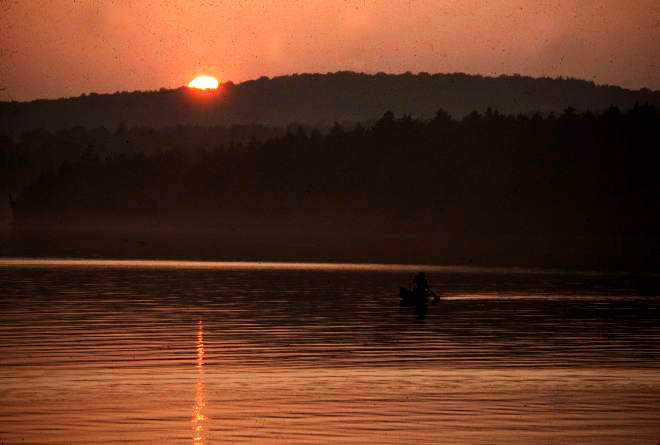
When the photographer
sees a subject of great personal interest it is not enough to
simply center that subject within the viewfinder and press the shutter
button. This would result in a static, uninteresting image.
Therefore, it is very important
to arrange the main subject and other supporting elements in a manner
that makes the final scene as dynamic visually as possible to the
viewer.
For the novice photographer selecting the proper placement within
the frame can be confusing. Where does the main subject go? What about
the other supporting elements. Where do I place those?
To simplify this, I would suggest the old standby "RULE OF THIRDS."
A 35mm
viewfinder is a rectangle, whether we hold the camera horizontally
or in the vertical
position. By dividing the frame into thirds with two vertical lines
and two horizontal lines we wind up with four intersecting points.
These are called "POWER
POINTS" and they are the suggested positions for the main elements
that make up
the final image.
Besides the four
intersecting points there are the two horizontal lines that are important
when a horizon is part of the scene. A horizon when placed along either
the top or bottom line is stronger than if it was placed directly
across the center of the frame. The same can be said of a vertical
element such as a straight tree. It may be better to place the tree
along one of the vertical lines off center to strengthen the final
composition of the landscape.
The size of the
subject doesn't play a role in whether the rule should be applied
or not. Macro scenes of insects, flowers and other tiny subjects should
be treated the same way for a properly composed final image.
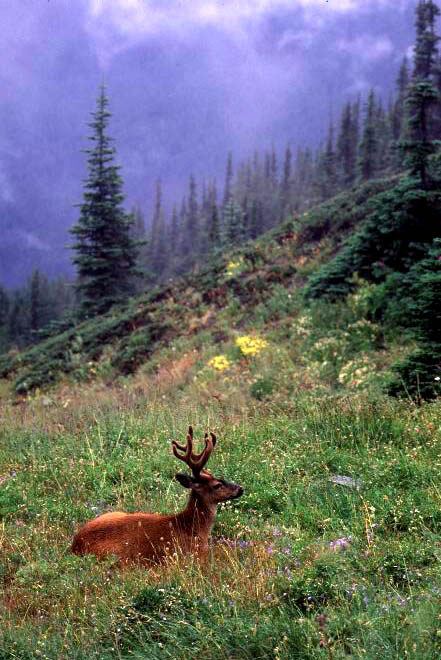
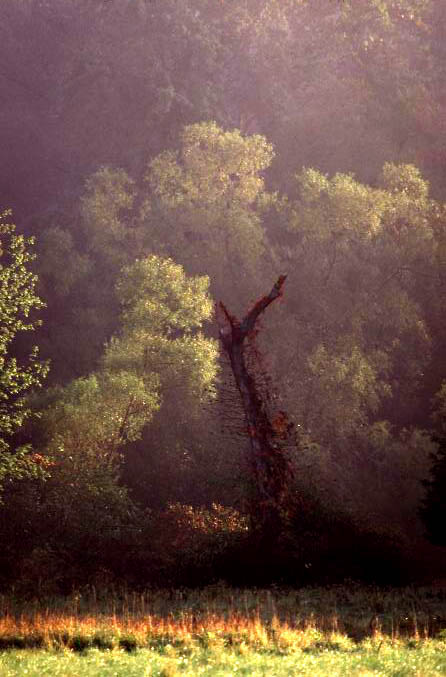
In both of the above photos the main subject is placed approximately
at a lower
power point of the "RULE OF THIRDS." If we imagine the intersection
of the lower
horizontal line and the left vertical line we can see that the deer
is placed at that
power point. I used a vertical format for this photo, because the
distant trees and mountain scenery was more photogenic than any other
elements off to either side.
Another consideration was to place the deer "looking into"
the scene rather than
placing him on the right side of the frame "looking out."
In the second
photo, the dark, dead tree covered with red ivy became my main subject.
Since it was leaning toward the left I placed it at the lower right
power
point "leaning into" rather than out of the scene. Once
again I chose the vertical
format due to more interesting background above the main subject.
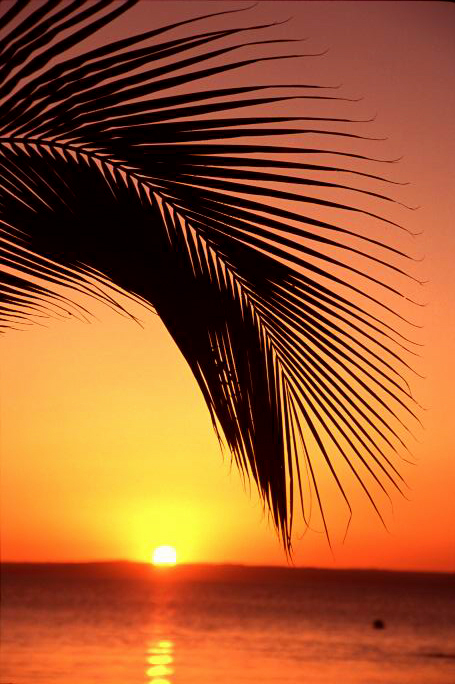
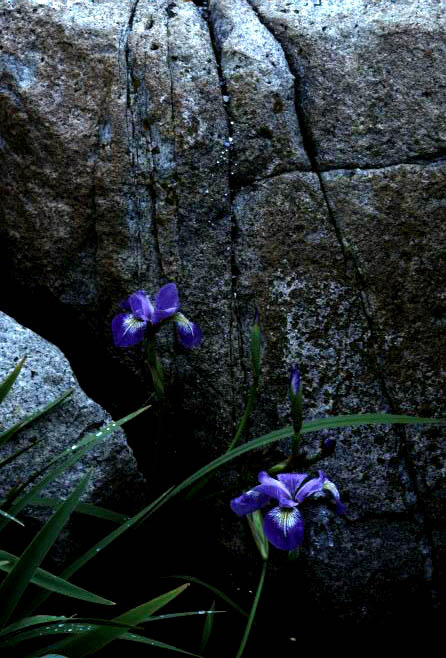
In the sunset photo above I
wanted a meaningful image of a tropical setting. This
Baja scene was quickly created when I spotted the graceful palm frond
draping in such a beautiful way, that it was a simple matter of moving
the tripod so that the
setting sun was placed at the lower power point on the left side and
the silhouetted
palm frond gracefully fills the frame. Notice that the horizon line
is not across the
middle of the frame.
In the second photo taken of Iris along the coast of Maine placement
of the colorful flowers were placed off center to the left. I was
attracted to the scene by the photogenic boulder as well as the flowers.
The nice fissures in the rock surface add
wonderful lines of interest and the green stems gracefully point into
the scene.
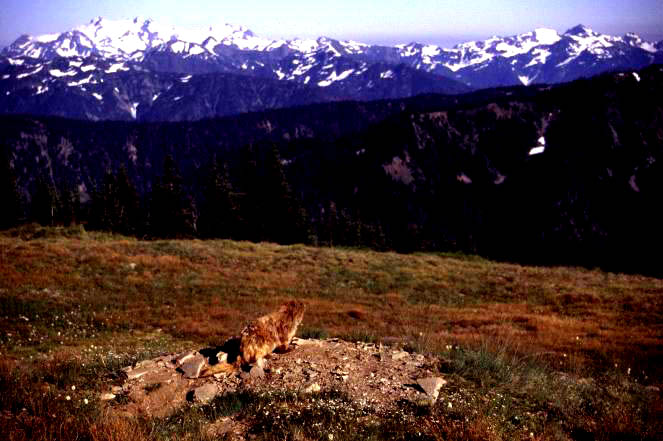
While leading
a photo tour to Olympic National Park the group was taken to the
marmot colony along Obstruction Point Road. This is a fantastic setting
high in the mountains and is a favorite of mine. These curious creatures
dive into their burrows
as soon as we arrive, but if we are quiet and patient they creep out
and resume their
daily activities. Here I placed the marmot closer to the lower left
power point allowing the animal to "look into" the scene.
I was so close that I shot with a 24mm lens for this image capturing
the magnificent vista that this little marmot sees every day.

The lake photograph
above was taken at Moosehead Lake, Maine on a beautiful
summer evening. I spotted a man in a canoe and realized that he would
become an integral element for a nice photo. I ran along the bank
carrying the tripod so that
i could line up the setting sun and he in the same scene. My idea
was to place the sun
near the upper left power point and the man in the canoe down low
near the lower right power point. This placement gives the scene a
feeling of balance - serenity.
There are no
definate rules for composition. There are times when rules can be
broken and the image "works." Over the years I have "etched"
the RULE OF THIRDS so deeply in my mind that even when shooting fast
action scenes or shooting from a plane or helicopter I envision those
power points to place elements
of the scene that stand out and it enables me to compose stronger
more vibrant final images.





